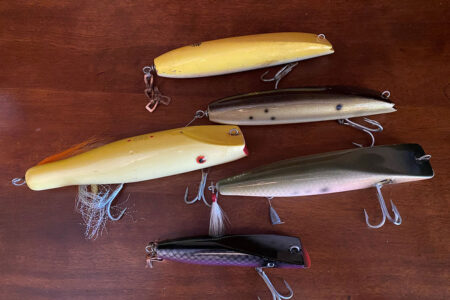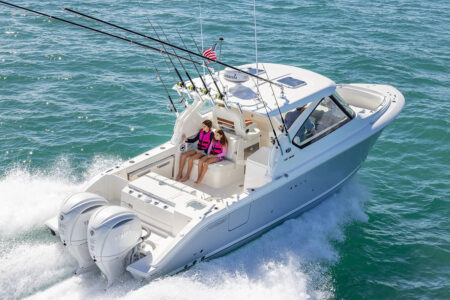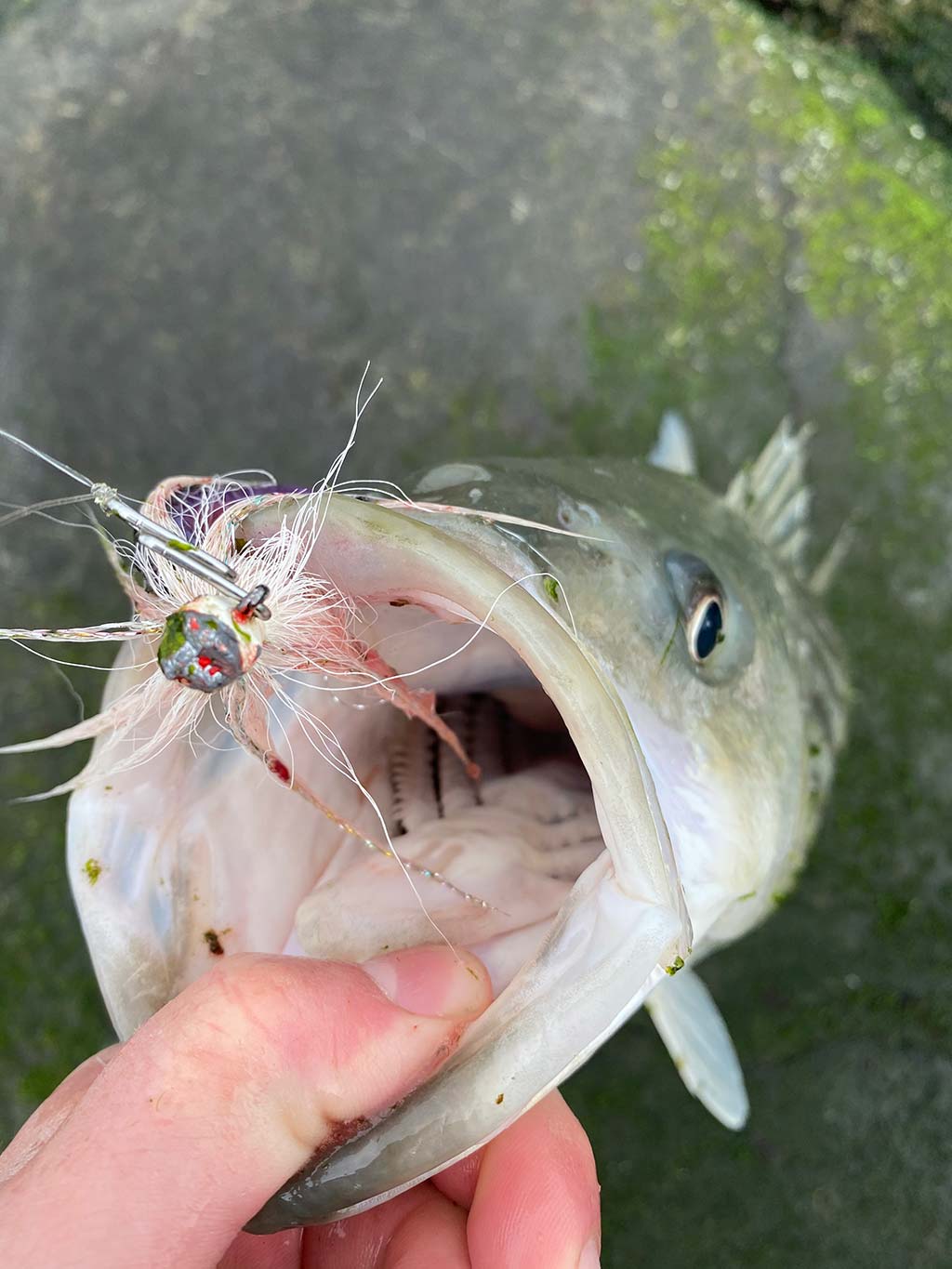
Hardcore cohost of Saltwater Heart Fishing offers light tips for outback bass.
I have gotten this question or something similar many, many times: What is your most successful lure for stripers? Or, what do you have the most confidence in throwing when you are fishing for striped bass?
Without a doubt, my quick reply to those questions is a bucktail. People that aren’t familiar with using them are sometimes surprised, or they will have an answer saying that they never have success with it.
More often than not, that lack of success is because they are using too heavy of a bucktail for the current they are fishing. I am talking about the quarter-ounce to half-ounce range and every once in a while a three-quarter; but that’s rare to go that heavy for back waters. Most people will tell me they usually use 1- or 2- ounces, which is more than twice the weight I’d recommend. Those bucktails have their place in the striper world but more so in strong ocean front currents and deeper water fishing, such as inlets.
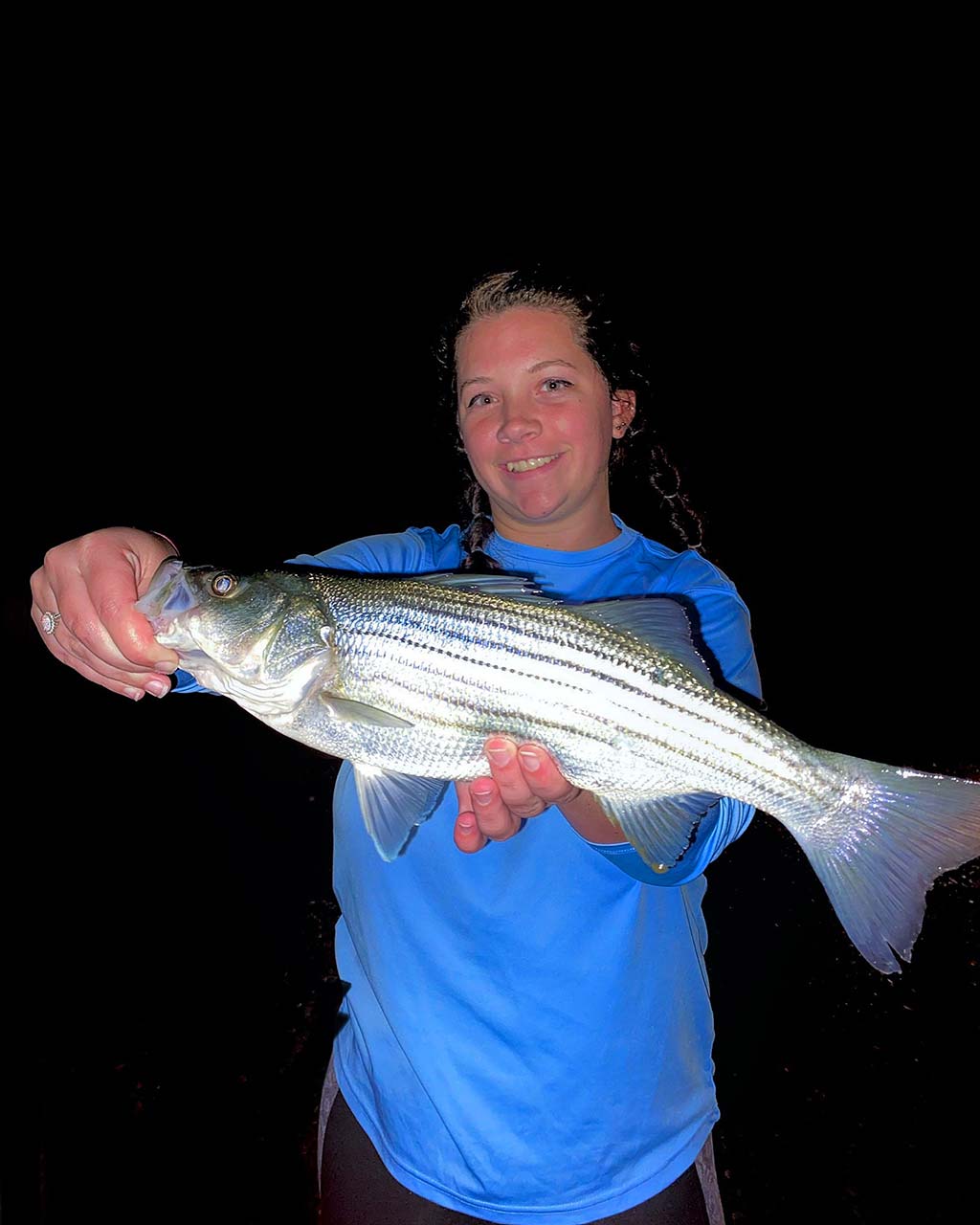
Light Is Right
I use a lightweight bucktail about 80% of the time I’m fishing in the back bays, sod banks or even jetties when there are not high surf conditions. They are very versatile in that they can be used in many conditions. Where I find the most successful are areas that have a sweeping current. I have also found they work well when fishing or drifting a flat; either from the sod bank or on a skiff next to a flat. While there are many other type lures or flies that will work in the same situations, this is something that I put a lot of time into and therefore have an awful lot of confidence in it, coming from the fish I have landed with it.
When the current is stronger, you will need a heavier one to still be able to feel your jig and not just be swept away with that current. But by heavy, I’m talking only a 1/2-ounce bucktail. And when the current is not as strong, such as when the tide is slowing up toward the end of a tide or when it first switches after slack, that is when you’d want your lightest jig head on your bucktail. And you always want to cast up current.
So picture this – if the area/flat is about 8 to 10 feet deep, you cast up current to where you are targeting. If you are using a light bucktail, it won’t drop quickly to the bottom given that current will move it across the sweep and not allow it to fall directly down. This is what you want; to stay in the strike zone longer. That is key in any area of fishing. The longer you stay in the strike zone, the higher percent of hooking into fish, or more fish.
When you cast a 1/4-ounce bucktail in that depth range, it’ll land in the water and sweep with the current, suspending or slowly dropping in the water column; this is perfect. As it drifts across, this is the strike zone you want your bucktail to be. It is certainly fine to be close to the bottom, so switching to a 3/8-ounce would be the next move if no fish commit. You may come into slight contact with the bottom but you don’t want to be dragging it across the sweep.
As the current gets a bit quicker, the switch to a 1/2-ounce may be needed to still be able to feel it. But, I must stress that you want to be as light as possible. Fish it as light as the current will allow you. So start light and go heavy as you feel is necessary.
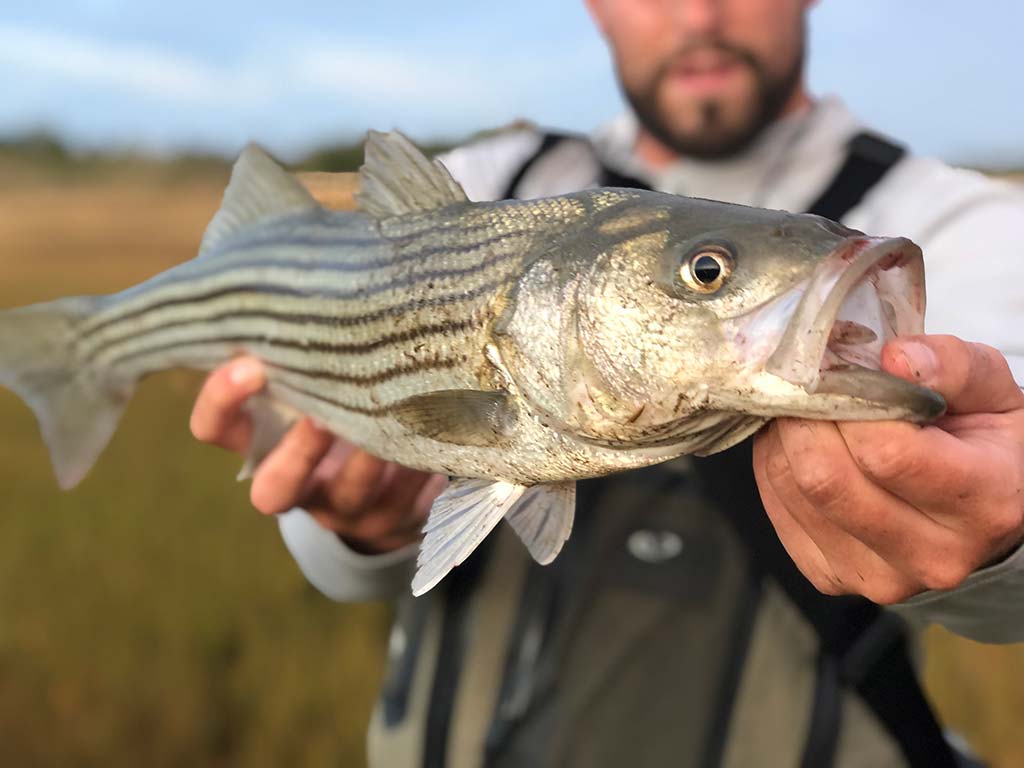
A Hairy Situation
The amount of hair on the bucktail will also factor into the rate at which it will suspend in the water column. More hair will give it a slower fall rate and become more buoyant than a smaller profile one that will fall just a bit quicker. Both options are good to have in the bag. Sometimes a smaller profile will bring a bite when fish are finicky or the bait that is around at the time is smaller. I have even caught fish with a bucktail that had no hair left on it, so in a sense, it was just a jig head and a trailer.
Keep in mind that wind could also be a factor; with anything but a light breeze, it is hard to fish this way. Some type of wind (about 10 mph and higher) will make it hard to feel the light bucktail, which is critical. Often times this will cause you to get hooked or not be able to work the sweep correctly.
One thing that has improved the number of fish I have gotten using this technique is some pronounced twitching of the rod in a comfortable cadence across the sweep. Single twitch, quick double twitch or just change it up until you find something that entices fish to bite. Too many times I was too subtle with this, and it wasn’t until I starting doing more pronounced twitching that I realized this would bring more fish to my feet in the end.
Another thing I realized is that when stripers are feeding, no trailer or oversize profile is too big. I’ve seen a 12-inch bass eat a bucktail and trailer that was overall 8 inches long. That’s not to say you always just want to “go big or go home,” but it’s something to keep in mind. My go-to trailer is a skinny profile curly tail in either white or a dark purple. As far as bucktail color, I’ve never really had a reason to use anything other than white, so that’s mostly what I’m throwing. So it’s a white bucktail with a white or a purple trailer 95% of the time that works for me.

Gearing Up!
The rod and reel selection is somewhat a factor for ideal presentation, with the rod being more important. I like to use a 7-foot or 7-1/2-foot rod in length, depending on if I need some extra casting distance. I also would prefer a medium rod with fast action to give some extra feel but you will be fine with a medium heavy rod as well. My “go to” rods are either the St Croix Legend Tournament Inshore or St. Croix Avid Inshore.
Match up your reel based on the size and weight of your rod, which will most likely be a 3000 to 4000 size reel depending on the brand you choose. A PENN slammer 3500 and a Van Staal VR50 are on my two “go-to” reels.
I truly feel that once you start using this method of targeting back water striped bass, you will figure it out more and more. You can be successful fishing this way from the beginning of spring, up until the season ends at the end of the year. In summer, you may have to fish after dark or on an overcast day but you can still find those holdover fish in many of the back waters of New Jersey. Moving to the autumn months it’s a great way to take advantage of the run of finger mullet and peanut bunker which will be preparing to run from the estuaries to the open ocean.
You can fish this method in dock lights, bridge lights, flats and anywhere else you may have a sweeping current. Experiment and figure out once you get the hang of it. The possibilities are endless.
The more you catch on a lightweight bucktail, the more your confidence will grow. And to me, that’s the whole key right there!
